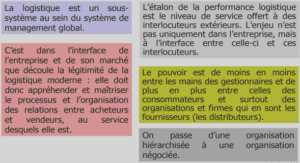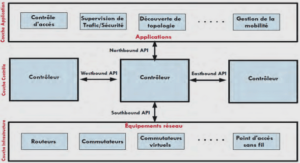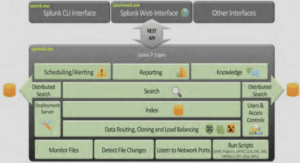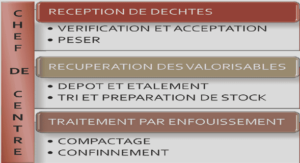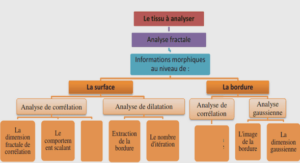Research challenges:
In-between innovations and projects And as we were analyzing the innovation trends, benefits and challenges and those for the projects, we started to detect contradictions, but also similarities and complementarities all at the same time, which led us to believe it is worth exploring the interaction and relationship between the two areas to attempt solving the complexity issue described in the first chapter of this research. On the complementary traits, what innovation is missing in terms of clarity in definition and process is what projects seem to excel at, with some clear and widely consented definition and agreed processes that the innovation area is still searching for. Looking at the similarities, it seems that today’s modern organizations are trying to use both innovation labs, R&D centres as well as the project and program offices to break from the traditional organizational structures with the hope to come up with a final deliverable that is new, unique and different. On the other hand, no one can ignore the fact that organizations today are still perplexed to put the words innovation and project in the same sentence.
Innovation is often perceived within organizations as the free, unstructured and borderless work that requires the genius of the people involved to produce the next big idea, while the project term is commonly perceived to a very structured and defined scope and process that doesn’t tolerate deviations and regularly rejects creativity that is considered “out-of-scope”. Still, the real unanswered questions are, why many innovation works don’t see the light (market: customers, users or citizens)? Why several important projects fail? Despite the defined processes and scopes. Looking at it the other way around, what makes innovation work? And what makes the project successful? Could organizations and governments benefit from the structure of the projects to make great ideas a reality? And can the inspiration behind a great idea define and drive projects’ success? It is certainly worth exploring. Nonetheless, let us first recognize that organizations are generally dense with several internal and external interdependencies, objectives and goals. Within this organizational density, innovation and projects are arguably the most complex work an organization undertakes with the human factor at its highest, connected processes and networked organizational structures. Therefore, exploring a relationship between these two complex undertakings will require applying simplification through an effective use of dynamic systems to try and explain any relationship through the feedback loops and interactions.
Literature Review
A review of some major literature in management, project, and innovation with their impact and integration in order to a) build from what has been researched, b) integrate some of the existing work for new area of work and c) focus on unique angles that has not been thoroughly explored in the past.
Evolution of Management The concept of management as an activity to coordinating people and resources with the objective to achieve the desired results is a discipline that existed as long as human beings lived to survive through the different prehistoric as well as modern days. The evolution of the concept (The way we manage and organize) has indeed evolved together with the people and civilization normal evolution including the introduction and use of new resources, tools and equipment to facilitate achieving results.
The Early Beginnings Therefore, it is important we review the evolution of management concepts to help determine any pattern, or combined pre-existing models, which could solve the current and future management challenges. When doing this, it is worth highlighting the history of management doesn’t necessarily evolve in a consistent linear manner, each period of time has complex and dynamic interaction that cannot be completely separated and distinguished as part of a specific and isolated periodic of time, and therefore the periodic classification used in this paper are used just to simplify the review process, by determining when a concept was first developed and used regularly without necessarily ending that management concept by the start of the next one. This is done in an attempt to facilitate the discovery of some useful characteristics, which could advance our modern management thinking, in a way it proactively solves current and future organizational challenges.
Historically speaking, and although the term widely known today as “management” is being directly linked to the modern era (Industrialization), it is difficult to deny the fact ancient civilizations that existed prior to the modern era, such as the Egyptian, Indian, Chinese and Sumerian age-old societies had used different forms of management to facilitate trade, construction or in organizing war campaigns. It is true however that the techniques, tools and work relationship including workforce compensation and motivation, which were mainly described as top-down and authoritarian, had been completely different back then to what researchers and practitioners would describe management in the modern era. From the 5th to the 15th century is when the world started to slowly witness some advancement in the use of new management tools with thanks primarily to the introduction of the Hindu-Arabic numerals (Smith and Karpinski, 1911) which led to the evolution of double-entry book-keeping in the 13 and 14 centuries by the merchants of Venice, transforming the way enterprise conducted and controlled its business activities. In the 18th and 19th centuries during when the industrial revolution began with factory management concepts that were mostly inspired by military practices (Giddens, 1981). The industrial (factory management) revolution had prompted key economists and theory thinkers such as Adam Smith and John Stuart Mill (who lived in the 17-18th century) to contribute in providing ideas on management issues such as factory production, resourcing and market value (Pricing). At the same time, others like James Watt, Matthew Boulton and Eli Whitney focused on specific elements related to the factory production activities including processes, quality and planning procedures. While the role of a compensated managerial position came into the management surface by the late 19th century (Khurana, 2010).
The Organizational
Challenge to Innovate while Delivering Results that Impact Just like global climate change, organizations are faced with constant changes that are increasingly unpredictable and complex in nature, making it extremely hard for managers and researchers to explain them. Durability seems to be also a common theme in the two unrelated areas of climate and organizational changes. While durability at the macro level is generally recognized as preserving resources (Through the responsible use of available means) for the use of the generations to come in order to sustain life in our planet for as long as possible. In organizations, it can simply mean the company ability to continuously innovate its product, services, processes and business model while still being able to deliver meaningful results that positively impact its own performance measured by its diverse stakeholder groups, all with the ultimate objective to increase the company lifecycle for as long as possible. This challenging mission by many companies around the world to extend their lifespan and durability is evidently witnessed when we for example look at and compare between the Fortune 500 firms that existed in the early and mid-20th century versus the 21st century latest fortune 500 list, which reviles an astonishing 89% of the companies on the original 20th century list that disappeared from the current list. And many newcomers (e.g. Facebook, eBay, and amazon.com) are appearing on the list to replace some giant names (e.g. American Motors, Studebaker and others). While at the macro global climate change level, biologist and scientist such as Charles Darwin explained the evolution theory in species, which people like Herbert Spencer used its principles in trying to explain economic evolution (The survival of the fittest).
In the micro organizational level, the question about what makes a company “the fittest” to survive the test of time to continue to achieve greater result and maintain appearance in the fortune 500 list for as long as possible (As just one indicator). Adaptability, in species was a reason used by biologists to explain the survival theory, but what exactly can this mean for companies? Major companies and even industries lost their market leadership position in a blink of an eye because of a disruptive innovation or an external unpredictable factor, which the company failed to predict and/or its impact. Take the examples of the Bitcoin that is bypassing traditional banks and clearinghouses with new technology. Airbnb outcompetes in the hotel and accommodation services through the home-sharing concept. Coursera and edX, among others, threaten business schools with massive open online courses (MOOCs). Uber sidesteps the licence system that protects taxicab franchises in cities around the world (De Jong & Van Dijk, 2015). Even in industries that survived for centuries without any major change such as the cigarette and tobacco industry where we are witnessing the impact of e-cigarettes on the whole sector, regulation and the way smokers consume the nicotine.
These disruptive innovations make major organizations and industries stand on their toes to prepare for the worst-case scenario, by always challenging themselves, their management approach and business model before they get overpassed by the innovative Newcomers and unpredictable factors. Doing all of this preparation and planning while maintain their focus and ability to deliver daily results in order to sustain their leading market position, satisfying their customers, shareholders and own manpower, making nowadays organizations truly micro-complex systems. In order to help with this important organizational challenge for durability (i.e. to innovate while delivering results with impact), companies started to introduce new management concepts to solve the challenge and simplify its own increased complexity. For example, the introduction and increasing trend of the management by project concept in many organizations around the world is one important way that companies are using to get away from the traditional functional and bureaucratic management in the hunt for new ideas and effective delivery mechanism using a temporary “projectized” environment. Innovation management and the massive investment in R&D by modern companies and leading industries is another vivid attempt to sustain their ideation pipeline to keep up with competition and external unpredictable challenges.
LIST OF ABBREVIATIONS 2.3 Research Methodology |

